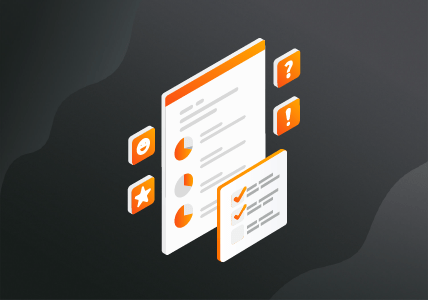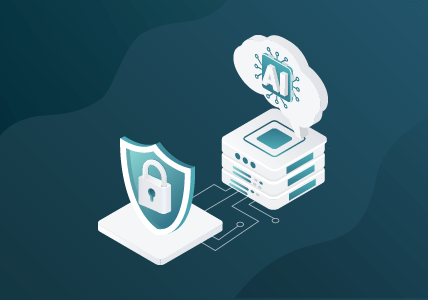What Is Cloud Computing?
Updated June 10, 2025.
Cloud computing allows organizations to access and store IT resources over the internet instead of on a local computer or server. Rather than purchasing and maintaining physical data centers, you can securely access computing services like servers, storage, databases, networking, software, and analytics over the internet.
This is often more flexible, innovative, and fiscally strategic. Gigamon plays a pivotal role in enhancing this digital ecosystem by offering deep observability solutions that ensure security, performance, and efficient management of cloud environments.
Benefits of Cloud Computing
Especially as hybrid and multi-cloud environments take center stage, cloud computing is becoming more of a necessity than a perk. In fact, cloud computing has revolutionized the way organizations access and utilize technology resources. Here are some of the ways that organizations are transforming as they embrace cloud computing for their IT resources.
Cost Savings or Effectiveness
Cloud computing reduces the need for significant upfront capital expenditure on hardware and physical infrastructure. The operational model shifts to a pay-as-you-go basis, allowing businesses to pay only for what they use, which can lead to substantial cost savings.
Increased Speed and Agility
The availability of on-demand resources through the cloud allows organizations to deploy and scale applications quickly, which makes them far more agile. You have access to a huge range of technologies that you can add to your infrastructure as needed, from storage and databases to machine learning and analytics. This flexibility is crucial for responding to market changes and seizing new opportunities — and frees up IT teams to focus on deeper strategy and security concerns instead of implementation.
Elasticity and Scalability
With self-service provisioning, organizations can scale their cloud computing resources up or down with ease depending on current needs — without being forced into significant capital investments. This scalability ensures that companies can efficiently handle varying workloads without a hitch.
Flexibility
Cloud computing also enables users to access systems and data from anywhere, supporting remote or distributed workforces. The cloud lets you expand to new geographic regions or expand globally in minutes. This geographical flexibility supports a variety of business continuity plans, making operations resilient in the face of disruptions.
Performance and Security
Modern cloud services provide robust, state-of-the-art infrastructure that delivers high performance and enhanced security posture. Cloud providers invest heavily in securing their platforms, which benefits all users by offering strong data protection mechanisms and reliable service availability.
Gigamon significantly amplifies these benefits through its advanced visibility and security solutions. By offering deep observability, Gigamon helps businesses optimize their network performance and manage data flows more efficiently. This leads to cost savings by reducing the need for over-provisioning and enhancing the utilization of cloud resources.
Some organizations face the challenges of scaling their operations and leveraging remote access without sacrificing security and efficiency. Gigamon’s cloud security solutions ensure that flexibility and remote access don’t compromise the security posture of the cloud computing environment.
With real-time monitoring and threat detection capabilities, Gigamon provides an added layer of security that supports the performance and robustness of cloud services. This comprehensive approach helps organizations take full advantage of cloud computing while minimizing potential risks.
Types of Cloud Computing
Cloud computing is categorized into different types based on the deployment model, which determines how resources are shared and managed. Here are the three main types of cloud computing:
Public Cloud
The public cloud, the most well-known kind of cloud computing, consists of services offered over the public internet and operated by third-party cloud service providers. This model allows businesses to access a wide range of resources, such as computing power, storage, and applications, without needing to own or maintain the physical infrastructure. Public clouds are highly scalable, cost-effective, and ideal for businesses that need to manage large volumes of data without high upfront costs.
Private Cloud
The private cloud is a cloud infrastructure operated solely for a single organization—which comes with perks and pitfalls. It can be managed internally or by a third party but is hosted either on-premises or in a private data center. This deployment model offers enhanced security and control, which is critical for businesses with strict data privacy, regulatory compliance requirements, or unique customization needs.
Hybrid Cloud
As you may have guessed, the hybrid cloud is a combination of public and private clouds, integrated through technology that allows data and applications to be shared between them. This type enables businesses to maintain a private infrastructure for sensitive operations while also taking advantage of public cloud resources for less critical operations. Hybrid clouds offer flexibility, scalability, and efficiency by allowing organizations to distribute their workloads across private and public environments, optimizing the benefits of both.
Types of Cloud Computing Service Models
Cloud computing is not only differentiated by the type of deployment (public, private, hybrid) but also by the service models it offers. These models define the level of management and technical capabilities provided to the user.
IaaS (Infrastructure as a Service)
IaaS provides basic computing infrastructure such as virtual servers, storage, and networks. This model allows businesses to rent IT infrastructure on a pay-as-you-go basis from a cloud provider, eliminating the capital expense of buying and managing physical servers. IaaS offers flexibility and scalability, which is ideal for startups and businesses testing new ideas.
PaaS (Platform as a Service)
There is also PaaS, a computing platform and solution stack as a service. This includes not just hardware and an operating system, but also the middleware, development tools, database management systems, and more. PaaS is designed to support the complete web application lifecycle: building, testing, deploying, managing, and updating. This model is particularly useful for developers who want to create applications without worrying about underlying infrastructure.
SaaS (Software as a Service)
Software as a Service is designed to deliver application-level services accessible over the internet. Users can access software applications on a subscription basis without the need to maintain the underlying infrastructure, operating systems, or other resources. Examples include email services like Gmail, productivity tools like Microsoft Office 365, and customer relationship management (CRM) software like Salesforce.
FaaS (Function as a Service)
FaaS is an event-driven execution model that enables serverless computing. Developers can write and update pieces of code that execute in response to events such as clicks or file uploads. FaaS automatically handles the physical hardware, virtual machine operating system, and web server software management, enabling developers to focus solely on individual functions in their application code.
Serverless Computing
While similar to FaaS, serverless computing broadly refers to a model where the cloud provider manages the setup, capacity planning, and server management for you. Serverless architectures enable developers to build and run applications and services without having to manage infrastructure. This model is highly scalable and event-driven, often used for applications that require real-time data processing.
Challenges and Considerations in Cloud Computing
While cloud computing offers a range of benefits, it also presents unique challenges that organizations need to consider when navigating their cloud investments and infrastructure. These are key issues that decision-makers should be aware of.
Security and Compliance
Security remains a top concern in cloud computing, especially since data breaches can expose sensitive information to unauthorized parties. Organizations must ensure that their cloud providers implement robust security measures that comply with industry standards and regulations.
Such measures include data encryption, secure access protocols, and regular security audits. This goes beyond privacy, too— it’s also important to consider compliance with legal and regulatory requirements. It’s particularly critical for industries subject to strict data protection laws.
Another aspect of security is considering how efficient your monitoring tools are and how well they work together across your network of resources — after all, poor efficiency often leads to security breaches. Most organizations don’t have the bandwidth to perfectly monitor and optimize every tool in their network, which creates dangerous blind spots. That is why it’s so important to find solutions that give you real-time visibility and other network intelligence technology.
Vendor Lock-In
In cloud computing, depending on a single cloud provider can lead to vendor lock-in—and even a great vendor may not be able to scale with you as your company grows. This makes it difficult and potentially costly to switch providers if the need arises.
Vendor lock-in can especially limit flexibility and bargaining power, potentially affecting an organization’s ability to innovate and adapt to new technologies. To mitigate this risk, organizations should consider adopting open standards and ensuring interoperability in their cloud architecture.
Managing Multi-Cloud Environments
As organizations increasingly adopt a multi-cloud strategy to avoid vendor lock-in and optimize their services, managing multiple cloud providers becomes complex. Each provider may have different interfaces, standards, and performance metrics, which can complicate integration, data management, and operational consistency.
Effective multi-cloud management requires sophisticated tools to monitor and manage resources across different clouds, ensuring smooth operations and cost-efficiency. Management solutions that offer advanced dashboards and analyses into your network are key here.
Performance and Bandwidth
As we alluded to while discussing security, optimizing performance across cloud services is vital for maintaining business operations and user satisfaction. Factors such as network latency and bandwidth limitations can impact the performance of cloud-based applications, particularly when data must travel over long distances.
Organizations need to strategically select cloud service providers with adequate connectivity options. They may also consider implementing content delivery networks (CDNs) to strengthen performance for end users globally.
Cost Management
While cloud computing can be cost-effective, managing spending is a significant challenge, especially as services scale. Data transfers, storage needs, and additional services can result in unexpected costs.
Effective cost management strategies include continuous monitoring of cloud expenses. You can also use budgeting tools provided by cloud vendors, which means choosing the right type of vendor and service can make or break your overall fiscal strategy.
It’s also wise to consider solutions like Gigamon, which helps organizations reduce tool sprawl and maximize the efficiency of their tools. By buying fewer tools or iterations of those tools through optimizing your current IT network, Gigamon solutions lower costs related to data, storage, and other investments. With this tools cost calculator, you can see just how Gigamon technology saves organizations money — even lowering costs by 50 percent.
Gigamon and Cloud Computing
Many of the challenges that accompany cloud computing can be mitigated with the right cloud visibility and security technology, especially when solutions are designed for your multi-cloud environment.
Gigamon provides deep observability into cloud infrastructure, which is crucial for maintaining security and performance. By providing detailed insights into network traffic and data flows, Gigamon helps organizations detect and respond to threats more effectively.
Take the GigaVUE Cloud Suite™, for example. This tool allows you to migrate your existing security and compliance resources to hybrid and multi-cloud environments — and provides total visibility into all North-South and East-West (lateral) traffic using the GigaVUE Universal Cloud Tap (UCT). With the ability to secure container traffic, and a fast track to a Zero Trust architecture, GigaVUE Cloud Suite can completely support your cloud computing security.
This is just one part of the Gigamon Deep Observability Pipeline, a visibility tool that gives you a granular but comprehensive view of all data across your hybrid, single, or multi-cloud network. In other words, Gigamon simplifies the multi-cloud complexity by providing a unified visibility plane across different cloud providers.
Our solutions help businesses navigate multi-cloud environments by providing performance monitoring across all platforms with tools like an advanced dashboard. This capability is vital for enterprises that leverage the strengths of various cloud services while maintaining control over their multi-cloud infrastructure.
These tools allow for real-time visibility into encrypted traffic, identify anomalies, and ensure compliance with security protocols. This level of observability is essential for organizations to protect their assets in the cloud and understand their cloud environments thoroughly. This is ideal not only for better decision-making but operational efficiency, too.
To truly understand how Gigamon can transform your cloud computing experience, you can get a demo. Learn firsthand how the Gigamon Deep Observability Pipeline and security enhancements can optimize your cloud operations and strategy. Sign up for a demo today and take the first step toward a more secure and efficient cloud infrastructure.
**Written by Gigamon using AI research.

CONTINUE THE DISCUSSION
People are talking about this in the Gigamon Community’s Hybrid/Public Cloud group.
Share your thoughts today








 Dan Daniels
Dan Daniels